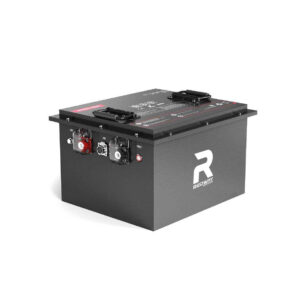What Are the Best RV Battery Types for Rough Terrains
Choosing the right RV battery for rough terrains requires balancing durability, temperature resilience, and charging efficiency. Off-road conditions demand batteries that withstand vibrations, extreme weather, and repeated deep discharges while delivering reliable power. Two standout options – AGM and lithium-ion batteries – offer distinct advantages for adventurers tackling challenging landscapes.
How Do AGM Batteries Enhance Durability for Rough Terrains?
AGM (Absorbent Glass Mat) batteries excel in rough terrains due to their spill-proof design, vibration resistance, and deep-cycle capabilities. Their fiberglass mats absorb electrolytes, preventing leaks during off-road jolts. Ideal for RVs, AGM batteries withstand extreme temperatures and provide consistent power, making them a durable choice for bumpy roads and uneven landscapes.

AGM batteries outperform traditional flooded lead-acid models in three key areas. First, their sealed construction prevents acid spills even when navigating 45° inclines. Second, the compressed glass mat layers cushion internal components against washboard road vibrations that destroy standard batteries. Third, they handle 50% depth-of-discharge (DoD) cycles without significant capacity loss – crucial for powering refrigerators and inverters on week-long desert expeditions. While heavier than lithium alternatives, AGMs remain popular for budget-conscious travelers needing reliable cold-weather performance. Their maintenance-free operation and 500-600 cycle lifespan make them ideal for RVs traversing rocky mountain trails where frequent battery checks prove impractical.
| Feature | AGM | Flooded Lead-Acid |
|---|---|---|
| Vibration Resistance | Excellent | Poor |
| Spill Risk | None | High |
| Cycle Life at 50% DoD | 500-600 | 300-400 |
Why Are Lithium-Ion Batteries Superior for Off-Road RV Adventures?
Lithium-ion batteries offer higher energy density, lighter weight, and longer lifespans compared to traditional options. They maintain performance in subzero temperatures and charge faster, critical for remote terrains. With no memory effect and minimal maintenance, lithium batteries endure repetitive discharging, making them perfect for rugged, off-grid RV trips.
Lithium iron phosphate (LiFePO4) batteries revolutionize off-road power solutions through advanced chemistry. Weighing 70% less than AGM equivalents, they reduce vehicle strain on technical trails while providing 2000-5000 full discharge cycles. Their stable thermal performance (-20°C to 60°C operating range) ensures reliable starts in alpine conditions where lead-acid batteries falter. Integrated Battery Management Systems (BMS) protect against over-voltage during regenerative braking on steep descents and enable 90%+ solar charging efficiency. While initially more expensive, lithium batteries prove cost-effective long-term – a 100Ah lithium battery delivers equivalent usable capacity to a 200Ah AGM due to deeper safe discharge levels (80% vs 50%). For expeditions crossing multiple climate zones, lithium’s adaptive charging profiles prevent damage when switching between alternator, solar, and shore power sources.
| Parameter | Lithium-Ion | AGM |
|---|---|---|
| Weight (100Ah) | 31 lbs | 68 lbs |
| Charge Time (Solar) | 4-5 hours | 8-10 hours |
| Cycle Life | 2000+ | 500-600 |
What Makes Deep Cycle Batteries Ideal for Rugged Environments?
Deep cycle batteries deliver sustained power over long periods, essential for RV appliances on rough journeys. Their thick lead plates withstand deep discharges without damage, ensuring reliability on bumpy roads. Designed for repetitive cycling, they outperform standard batteries in durability, especially when paired with solar setups for recharging in isolated areas.
How Does Temperature Affect RV Battery Performance on Rough Roads?
Extreme temperatures degrade battery efficiency. Cold reduces chemical reactivity, limiting power output, while heat accelerates corrosion. AGM and lithium-ion batteries mitigate these issues with robust thermal tolerance. Insulating battery compartments and using temperature-resistant models ensures stable performance in deserts, mountains, or snowy trails.
Can Solar Power Compatibility Improve RV Battery Longevity Off-Road?
Solar panels reduce reliance on alternators and generators, prolonging battery life. Lithium-ion batteries pair well with solar systems due to high charge acceptance. Solar compatibility enables sustainable recharging in remote areas, minimizing deep discharges and preserving battery health during extended off-road travels.
“Redway’s lithium iron phosphate (LiFePO4) batteries redefine rugged reliability,” says John Miller, Redway’s Lead Engineer. “Their vibration-resistant builds and 4000+ cycle lifespan outperform AGM in extreme conditions. For RVs tackling rocky trails, lithium’s rapid recharge via solar or alternator ensures uninterrupted power, even at -20°C. Always prioritize batteries with integrated battery management systems (BMS) for safety.”
Conclusion
Choosing the right RV battery for rough terrains hinges on durability, temperature resilience, and recharge efficiency. Lithium-ion and AGM batteries lead for their vibration resistance and deep-cycle endurance. Pairing with solar systems enhances sustainability, while proper maintenance ensures longevity. Invest in batteries with robust BMS and thermal adaptability to conquer off-grid adventures confidently.
FAQs
- Q: How often should I replace my RV battery on rough terrains?
- A: Lithium-ion batteries last 8–10 years, AGM 4–6 years. Replace if capacity drops below 70% or physical damage occurs.
- Q: Do I need a battery management system (BMS) for off-roading?
- A: Yes. A BMS prevents overcharging, overheating, and deep discharges, critical for protecting batteries in rugged conditions.
- Q: Can I use car batteries for my RV on rough roads?
- A: No. Car batteries lack deep-cycle capability. Use RV-specific deep-cycle batteries designed for prolonged discharges and vibration resistance.
